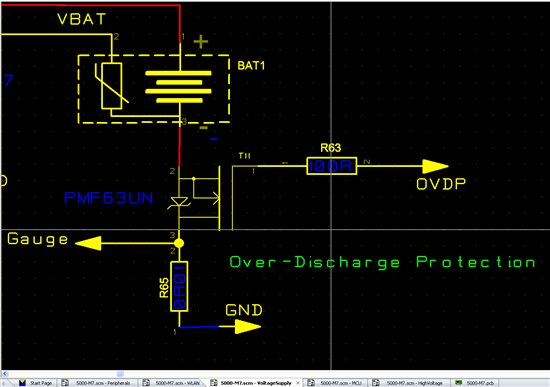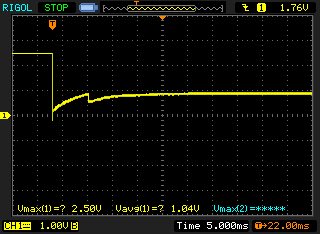Hi forum users,
I try to implement an easy way to protect an Li-ion cell from overdischarge.
The battery gauge TI BQ27410 sends every second the battery voltage to the MSP430F6635 and if the value 3.2V is reached, then the output of the MSP drives the gate to low and the device shuts down momentarily. But, instead of staying low, the Vgs rises again to 1V, the mosfet closes and the device restarts.
My goal: When 3.2V is reached, microcontroller switches off the mosfet and the whole system. If this happens, then through USB the MCU will start again and it will switch on the Mosfet again and a charging sequence will start over.
Thanks in advance for your ideas,



